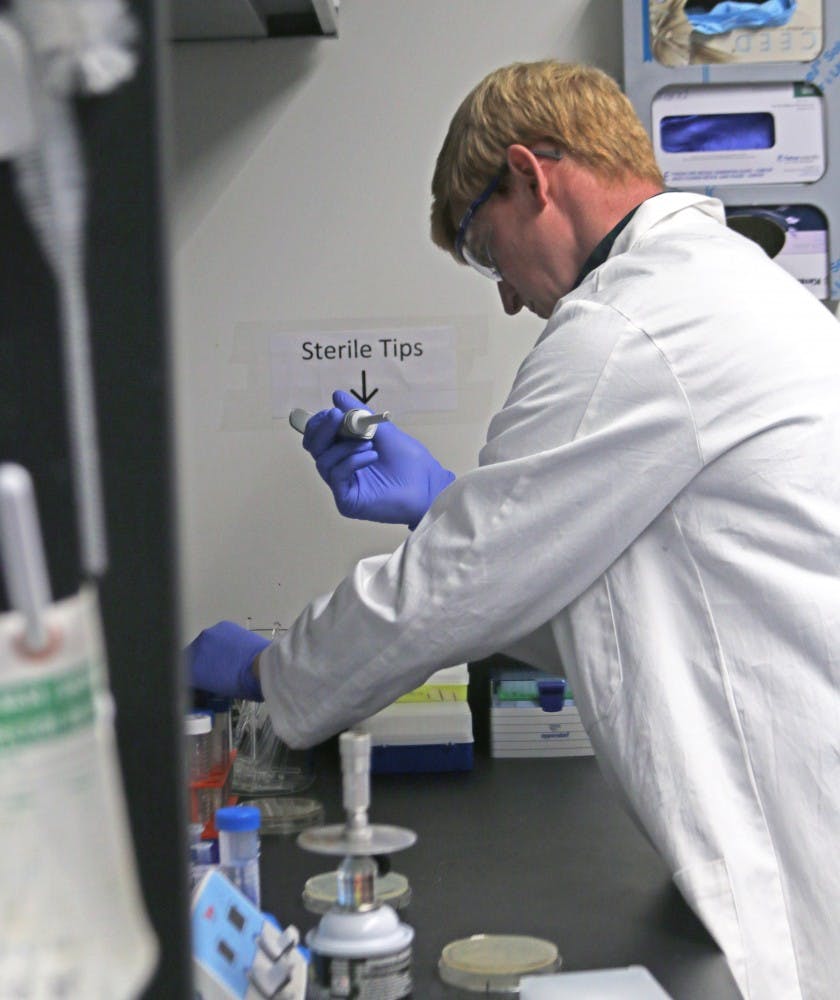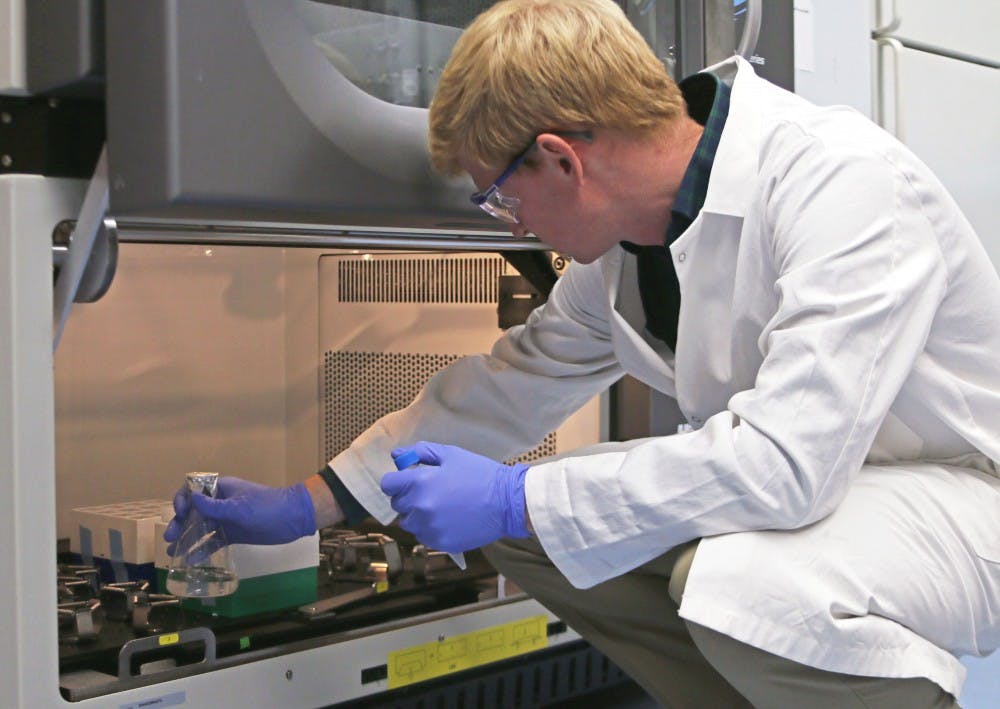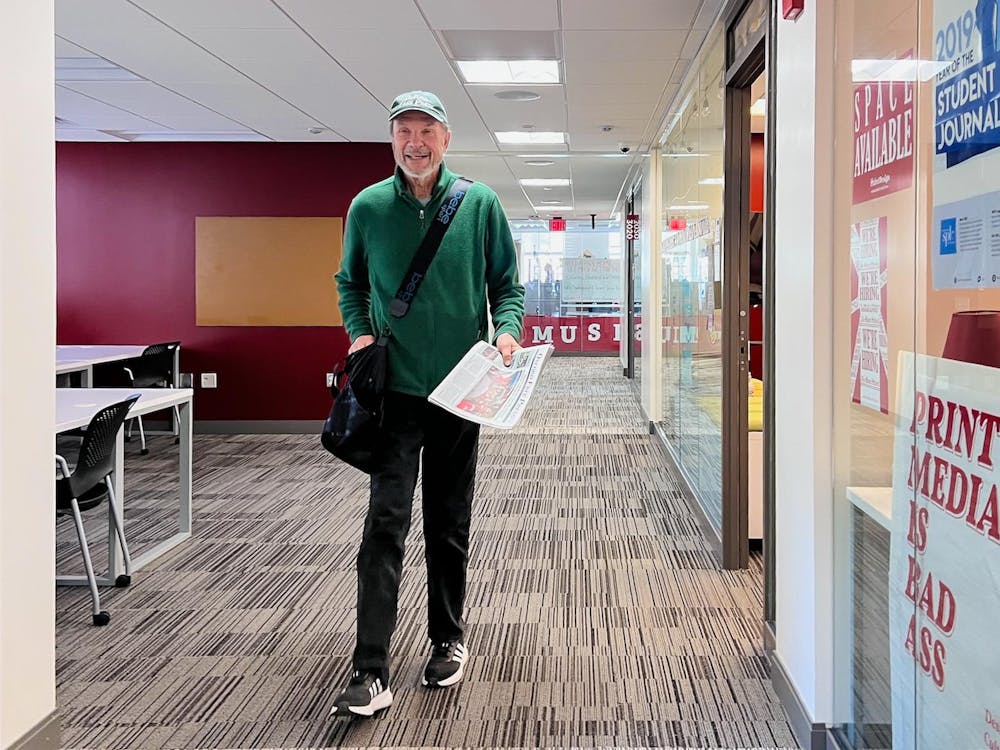A recent breakthrough in a Miami University undergraduate research lab could lead to cheaper production costs of medications that could be used to treat depression and other mental health issues.
The team of researchers working with biomedical engineering professor Andrew Jones successfully engineered the bacteria E. coli to produce a hallucinogenic compound, psilocybin, that could help treat depression, addiction and other mental illnesses.
Psilocybin, according to the DEA’s website, is a compound produced by some varieties of mushrooms and is known to cause hallucinations and an altered sense of reality in people who take it.
Even though it’s listed as a Schedule I Substance under the Controlled Substances Act, researchers outside the university are in phase three clinical trials of administering the chemical under supervision to help treat various mental illnesses.
Although pharmaceutical companies are testing psilocybin for commercial use to treat mental illness, the Miami research team is not a part of those clinical trials.
The university’s research is focused on creating synthetic psilocybin, instead of the time-consuming and costly process of extracting it from mushrooms. Jones worked with his team to create a strain of E. coli that will produce the compound more efficiently.
Despite psilocybin’s potential pharmaceutical properties, the DEA required that Jones and his students follow strict regulations in their research with the controlled substance.
Before research even began, the lab had to apply for a permit that would allow them to produce and store psilocybin. Samples can’t leave the lab, and the researchers cannot purify or concentrate the hallucinogen.
This past summer, professors on the Miami Hamilton campus were suspended for growing an iboga tree, which contains the Schedule I Substance, ibogaine.
But Claire Wagner, director of university news and communication, said the research team’s use of psilocybin was different from what happened over the summer because the Hamilton professors didn’t obtain a permit for the iboga tree.
Despite the medical possibilities, Jones and his team have had to fight the pre-conception that psilocybin is merely a hallucinogenic drug.

Enjoy what you're reading?
Signup for our newsletter
“[Psilocybin] is a really bio-active compound, and if we could harness that, it could be a really powerful thing,” Jones said. “So, Jones Lab is making cool pharmaceuticals, not party drugs.”
Currently, psilocybin can either be extracted from mushrooms or created chemically. In either production method, the process is time-consuming and costly. Jones worked with his team to create a strain of E. coli that will produce the compound more efficiently.
The researchers were able to create psilocybin at a faster and cheaper rate than extracting it from mushrooms naturally. Although the research team hopes to increase its output, the increase in production speed was impressive enough to attract several chemical production companies, Jones said.
Research is more than just an opportunity to change the face of chemical production, he explained. Research is an essential part of the undergraduate classroom experience.
“That’s why I’m at Miami,” Jones said. “I can do research anywhere, but I specifically like working with undergraduate students and developing a kind of passion and skill in them for research. So, I try to work one-on-one with students.”
First-year chemical engineering major Lexie Adams, one of the lead researchers for the psilocybin project, said she appreciates Jones’s commitment to his students.
“I didn’t know if I would like working in a lab, didn’t know what I wanted to do after school,” Adams said. “And now that I have worked in this lab on this project, I know one hundred percent that I want to go to grad school. I want to work on a research team.”
Junior chemical engineering major Nick Kaplan has been working with Jones since the beginning of the project.
“I feel he has really developed me into more of a research scientist rather than just a lab technician,” he said.
Kaplan, along with Adams and the rest of the student researchers, is very excited about the work that has been done.
But, the research is not over yet.
Kaplan said he looks forward to the opportunity to help lead the next steps of the project: introducing the genetic sequence into the E. coli genome permanently and increase output in reference to glucose input.




